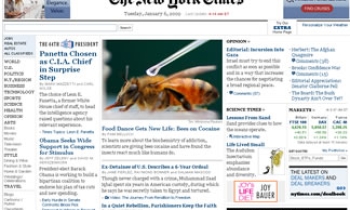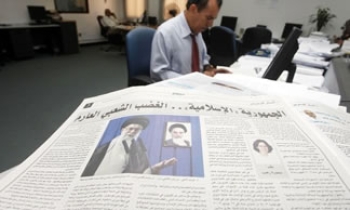The figures revealed by the National Readership Survey may have a gloomy picture to paint about the magazine scenario in the country. But that did not detract leading editors and publishers of magazines to believe that the future of magazines is brighter than ever before.
The mood, to put in it simple words, said leading journalist and editor-in-chief of the Indian Today Group, Aroon Purie, is upbeat. He went on to say that it was a great time to be in the media, especially magazines, which were his first love. The magazine business is going through a resurgent phase with booming circulation figures and increased advertising revenue, he said.
Purie was among the 100-odd delegates at the first congregation of its kind — the Indian Magazine Summit (IMS) 2005 — to deliberate on the future of magazine publishing in the country. The one-day summit was organised on July 29 here by the Indian Newspaper Society (INS) in association with Thomson Press and Pugmarks.
Setting the agenda for the summit, Jacob Mathew, deputy president INS and executive editor, Malayala Manorama, said, "Indian magazines are in transition. General interest magazines will soon lose interest among readers if they are not truly outstanding. Niche magazines are fast becoming a cliché and it would be the specialised magazines which will be successful in the days to come." Mathew felt that it had become essential for magazines to cater to specific interests of readers since new lifestyles brought about new possibilities.
Purie said there was ample scope of growth for magazines. He spoke about the press penetration in a country like China with a literacy rate of 91 per cent being 30 per cent, while the corresponding figures for India were 61 per cent and 23 per cent. He also mentioned the existence of service industries, and said there was enormous scope for special interest magazines for consumers, vendors, industry professionals, etc, in these areas. The future, he predicted, lay with conglomerates of specialised magazines.
The Eighties had belonged to magazines when they went colour both in terms of content as well as advertising. Newspapers dominated the Nineties which saw a spurt in supplement launches as well as new newspapers, besides existing newspapers going multiple-edition. The newspaper industry went through a transformation. The first half of this decade has been that of television with a surfeit of news and entertainment channels crowding the skies. The next half, Purie believed, would belong to every segment of the media.
It is not that everything is hunky dory. The ridiculous pricing strategies of magazines is harming the industry, Purie said, and exhorted magazine owners to increase prices which were appreciably low compared to international pricing standards. This policy was essentially a cascading effect of newspaper pricing.
India Today editor Prabhu Chawla said magazines always provide the big picture, and cited the examples of Time, Newsweek and the New Yorker to bolster his argument that all successful magazines survive through the power of the narrative. Delhi Press Group publisher Paresh Nath said the success of Saras Salil went on to prove that a magazine can well survive in the present media clutter.
On being asked by Chawla during a panel discussion on "Editorial challenges and opportunities for magazines", the publisher of the Delhi Press Group, Paresh Nath, said his magazines had survived solely because of editorial excellence. Nath was reacting to the Chawla's observations about many magazines closing down especially in the Eighties like Dinman, Dharmayug, Saptahik Hindustan, Sunday, and the Illustrated Weekly of India.
Shyam Malhotra, editor-in-chief, Cybermedia, did not see any new challenges being posed to magazines. He said the problems of timespace, mindspace and audience retention had always existed; the situation now had only been slightly compounded. Malhotra did have a conjecture to make: "More magazines will come up, and more will close down," he said.









